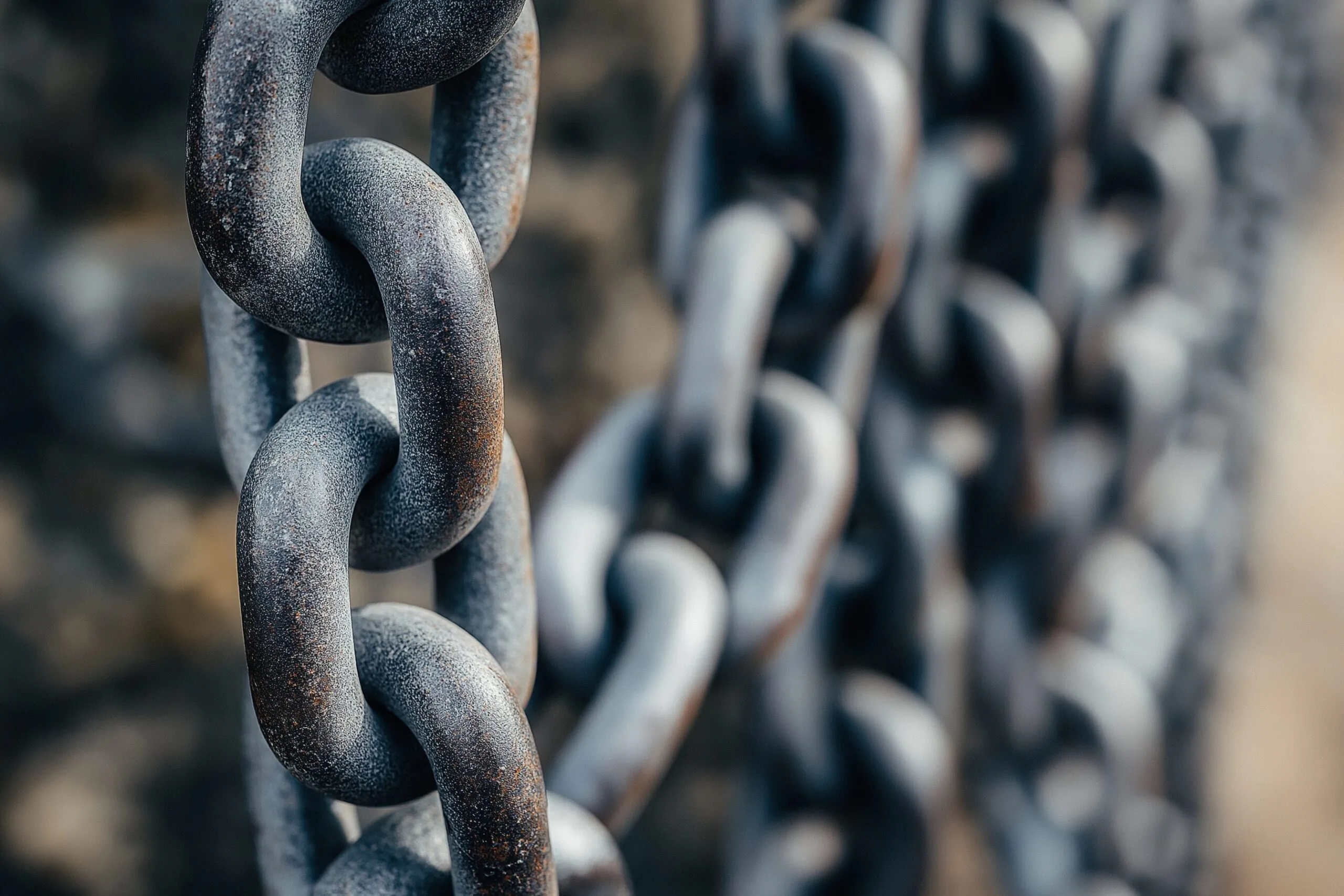Date of publication:
01 Oct. 25Types of SEO Links: How External and Internal Links Contribute to Site Growth
Imagine a virtual world where your website is an island in the vast ocean of the Internet. How do you make it findable? So that people want to come back to it? The answer is simple: links. They act as bridges that connect you with readers, customers, and even search bots.
External and internal links are not just technical SEO details. They are tools that determine how easily your site will be found, appreciated, and loved. But, as with anything, there are secrets: it’s important to know how and when to use these links so that they work for you, not against you.
This article will be your roadmap. We’ll look at how external and internal links can help you not only stay afloat, but also grow, gaining trust from both search engines and users. Ready to learn more? Then let’s get started!
External links are your ambassadors in the world of the Internet
External links, or backlinks, are like recommendations from other sites. Let’s simulate a situation: a reputable expert says that your site is a source of valuable information. This is a signal to both users and search engines that you can be trusted.
The more quality external links pointing to your resource, the higher your chances of taking the top positions in search results. But it is important to understand: it is not about quantity, because Google cannot be fooled by a “mountain” of random links. It all depends on quality: links from a popular industry blog page are much more important than from a spam directory.
For example, your business is a small organic food store. When a large website that writes about healthy eating adds a link to your recipes or products, it instantly draws the attention of a new audience to you. Search engines will also notice this and increase your authority.
However, there is another side to the coin. Low-quality external links are like toxic dating. If your site is linked to resources of dubious reputation, it may not only not help, but also harm. Therefore, external links are your business card on the Internet, which works for you only if they are clean and relevant.

Secrets of success: how to get powerful external links
Getting quality backlinks is an art that requires strategy, patience, and a little creativity. The most powerful links are always “earned,” not bought. Let’s look at a few ways to make your site a backlink magnet.
Create unique content
It could be detailed research, a how-to guide, or even an interactive tool. People love to share useful content, and your site will become their natural source.
Guest posts
Write an article for a popular blog in your niche, adding a link to your resource. This is not only a link, but also a chance to attract the attention of your audience. Research the site thoroughly before publishing to make sure it has authority and attracts your target audience.
Partnerships and collaborations
Arrange link exchanges or collaborations with other sites, such as creating a joint project. Involve experts and thought leaders so that their mentions of your site generate quality links. Use guest blogging on authoritative resources, providing valuable content with natural links to your site.
Create a media drive
Press releases or other informational occasions (such as the launch of a new service) will help get mentions on news resources.
But beware of the temptation to take the easy way out. Buying links, using link exchanges, or automated services can do more harm than good. Google easily recognizes such manipulations and may even penalize your site.
Remember: quality external links are not just hyperlinked text, they are proof of your authority. Give people and search engines a good reason to consider you the best, and they will lead you to the top.

Internal links are your GPS for users and search engines
Internal links are essentially the navigation of your site. Imagine walking into a large shopping mall without any signs. You get lost, feel annoyed, and most likely just walk away. This is how users and search engines react to a site that lacks internal links.
The key to internal linking is to create a clear, logical structure that allows both humans and Google bots to easily navigate between pages. For example, if you have an article about “10 Ways to Optimize Your Site Speed,” you could link to another page that details how to minimize JavaScript. This helps the user find more information and stay on your site longer.
Another important aspect is anchor text. This is the text used for the link. For example, an anchor text like “SEO tips” is better than “click here” because it gives search engines an idea of what’s behind the link.
Additionally, internal links help distribute “page weight.” If you link to important pages on your site from other pages, it increases their relevance in search results.
For example : Popular online stores often link from blogs to category or specific product pages. This both improves SEO and helps users quickly find what they are looking for.
And of course, internal links should be relevant and logical. Cluttered linking or link overload will only lead to annoyance. Your site should be like a map, not a maze.

The Art of Internal Linking: How Not to “Overdo It”
Internal linking is more than just connecting pages. It’s a strategic tool that, when used correctly, can significantly improve user experience and help search engines better understand your site. But how do you make it as effective as possible without losing control?
Let’s consider a few rules that are worth following.
Don’t turn text into “link spam”
It is common to see every third word in an article link to another page on the site. This looks artificial, annoys users, and reduces trust in the resource. The optimal number of links is 2–5 per article, depending on its length and topic.
Use natural anchor texts
Anchor text should be clear, relevant, and logical in context. Avoid anchors like “here” or “click here,” as they don’t give any idea of the page the link is taking you to. It’s important for users and search engines to understand what they’re getting when they click.
Avoid chain links
Chain linking, where one page leads to another, and that to the next, creates confusion. This can lead to the user getting stuck in the “maze” of your site and leaving it due to fatigue. Place links that lead to valuable and complete answers to questions.
Don’t just link to the home page
The homepage doesn’t need to be heavily reinforced with internal links. Focus on articles that may be less popular but still worthy of attention. This will help the entire site grow evenly.
Don’t duplicate the same links
You should not add multiple links to the same page within one article. This creates an excessive load on the user and may look like an attempt to “cheat” search engines. One relevant link is enough.
Keep links up to date
Make sure all internal links point to relevant and useful content. Dead or outdated pages reduce the authority of the site in the eyes of both users and search engines.

Avoid linking to too many pages at once
If a page has dozens of links to other sections of the site, it can confuse the user and make them feel overloaded. Only use links to pages that can truly complement the content.
Add links manually
Automatically adding links can lead to irrelevant or unhelpful relinks. A human has a better understanding of the context and can choose the best place to link.
Don’t link to low-quality content
Links to weak pages that don’t add value can damage your site’s reputation. Before linking, make sure the page meets high quality standards.
Consider user behavior
Focus on convenience: Put yourself in the shoes of the site visitor. Will the link be truly useful and relevant in that context? If not, it’s better to refrain.
For example, a successful blog might structure its linking so that new articles link to main guides or categories, and old entries are updated with links to new posts. This creates a dynamic network that keeps users on the site.
The biggest mistake is chaotic linking or overusing the same page for links. This confuses both search engines and readers.
Create a link that guides the user from the interesting to the useful, and your site will become not just a resource, but a holistic experience.
Balance between external and internal links is the formula for success
External and internal links are two sides of the same coin. They complement each other, creating a balanced SEO strategy. But how do you find the perfect balance between them to get the maximum effect?
External links are authority
They show that your site is recognized by other authoritative resources. This increases the trust of search engines and the audience. But it is important to remember: external links should not exceed 20–30% of the total, because excessive dependence on external sources can look suspicious.
Internal links are a convenience
They help users stay on the site, navigate to related pages, and find more information. Internal links should logically direct traffic to the most important pages.
Synergy of two approaches
Think of a store: external links are the ads that bring customers in the door, and internal links are the signs that help them find the product they’re looking for. If one of these elements is missing, a customer may get lost or not even make it to your store.

Regular audit
Use tools like SEMrush or Ahrefs to assess whether your links (external and internal) are working for you. Analyze whether the pages with the highest potential are getting enough “weight”.
How to achieve balance: a practical example
Let’s say your website offers online courses. You place external links in guest posts that talk about the benefits of your platform and drive traffic to your landing page. Then, internal links help visitors easily navigate between different course categories, customer reviews, and free materials.
External links help build trust and bring in new users, while internal links help retain them and make your site a useful resource. Success comes when these two types of links work together.
Debugging: What breaks a linking strategy
Even the best strategy can fail if you make common mistakes. It’s time to consider the situations that can ruin your link building efforts.
TOP-3 most common mistakes
There are often mistakes made during the optimization process that can negatively impact your search engine results. Even experienced SEO professionals sometimes make mistakes that reduce the effectiveness of their SEO campaigns. Here are three of the most common mistakes to avoid to improve your search engine rankings and provide a better user experience.
- Keyword spamming in anchor texts. An anchor is what a user sees before clicking. If you oversaturate it with keywords, it looks unnatural for both users and search engines. For example, instead of “buy a laptop cheaper in Kyiv”, it is better to use “laptop in Kyiv” or even “details here”.
- Low-quality external links. Links from irrelevant or spammy sites damage your reputation. Search engines view this as an attempt at manipulation, and you may be penalized as a result.
- Lack of internal linking logic. If users can’t find the information they need due to a confusing link structure, it reduces the usability of the site. Search bots won’t appreciate such chaos either.

How to avoid these mistakes: practical tips
Avoiding common SEO mistakes is possible if you act strategically and thoughtfully. Link optimization requires attention to detail and regular analysis. The tips below will help you maintain the quality of your internal and external linking, increasing the performance of your site.
- A reasonable number of keywords. Don’t use the same anchor in every link. Vary them depending on the context.
- Check external links. Before collaborating with other sites, analyze their ranking and content quality.
- Sitemap: Use an XML sitemap to make navigation easier for search engines, and regularly check all links for health.
- Relinking checklist. Create a simple checklist with basic questions: is the link logical? does it lead to a relevant page? will the user be interested in clicking?
Even if there are mistakes in your strategy, they can be easily fixed with regular analysis and adjustments. The main thing is to remember that links should help, not confuse.
SEO links are more than just an optimization tool. They are the foundation on which your website’s visibility in the online world is built. External links help build trust and attract new users, while internal links provide comfortable navigation, retain visitors, and encourage them to take targeted actions.
The main thing to remember:
- Quality is always more important than quantity. Both external and internal links should be relevant, logical, and organic.
- Maintain a balance between both types of links to create a harmonious SEO strategy.
- Avoid common mistakes, regularly analyze your actions and adjust your strategy.
Links are your path to success on the Internet. The better you work with them, the closer your site will be to the top positions in search. Start small: review your linking strategy and improve it step by step. The results will pleasantly surprise you.
Good luck in conquering the digital world!



